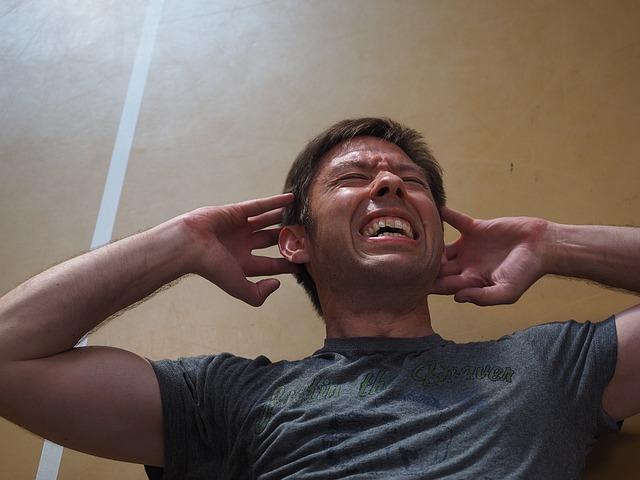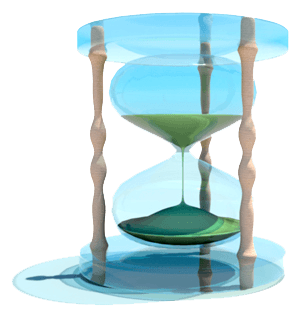Archive for March 2017
Ignoring your Lower Back Muscles is a Mistake
These are some of the most important muscles in your body
And they are some of the most neglected in the gym. People often prioritize looks and strength over functionality when it comes to weight training. This is a critical mistake from a chiropractor’s perspective because it often leads people to leave out some of the most important muscles in the body, including those of the neck, the trapezius, the stabilizing muscles of the core and those of the lower back.
There is a large network of support muscles in the lower back that often go ignored
The extensor muscles, flexor muscles, and oblique muscles provide support to the vertebrae of the lower spine, hold the body upright, stabilize the body to prevent traumatic forces from causing too much damage, and allow for range of motion in the body including basic twists and bends.
- Extensors are in the back and allow for motions like lifting.
- Flexors are in the front and enable motions like bending, lifting, flexing and arching of the back.
- Obliques are on the sides and help with rotation and stability.
Out of these crucial muscles, many people skip all except the abdominal muscles, a set within the flexors which are quite inconsequential when it comes to supporting the spine.
A plan for your lower back muscles
Let’s stop ignoring and start working them! You can significantly improve your experience with back pain by focusing on the strength of these three regions. We can show you specific exercises and stretches that will be within your specific ability level. Give our office in Fremont a call to schedule an appointment today!
Dr. Francis Scorca, D.C.
How to Relax and Sleep in Peace
Having trouble falling asleep in Fremont, CA?
For many people, sleep becomes trickier with age; we find it more difficult to fall asleep and are woken up by noises that previously would not have disturbed us. If you have consistent trouble falling or staying asleep it could be indicative of a sleep disorder. But if you are like many people, you could make drastic improvements in your sleep life by changing a few lifestyle decisions.
For example, did you know that caffeine can work in the body for up to 8 hours after consumption? If you have your last cup at 4 PM, the caffeine could be stopping you from sleeping as late as midnight. Alcohol is another factor that interferes with sleep. While its sedative effect may help you nod off, chances are you are not getting restful sleep and as soon as the effects wear off you may wake up feeling uncomfortable.
Make sleeping easier with these tricks:
Let’s look at other ways you can make falling and staying asleep easier:
- Bedtime routine: establishing a set time to go to bed and wake up helps your body establish rhythm which is critical for resting.
- Relaxing tea: try winding down days with chamomile tea instead of caffeine. The idea here is that you reduce anxiety instead of increase it.
- Magnesium and calcium: magnesium and its complementary mineral calcium help relax your muscles and decrease the presence of cortisol, a stress hormone that can keep you up.
- Workout earlier; consume caffeine earlier.
- Hot shower before bed: showers are relaxing; the hot water puts you in the right frame of mind for sleeping.
Is pain preventing you from sleeping?
At our office in Fremont, we are treat many people who’s spinal conditions are stopping them from falling asleep. Chiropractic adjustment corrects spinal imbalance and alleviates nerve impingement, which many people find is a boon for sleeping. If you need help rediscovering what it means to get a great night’s sleep, give our office a call to schedule an appointment today.
Dr. Francis Scorca, D.C.
Muscle Cramps: Pesky but Preventable
What is a muscle cramp?
Whatever you call them, you probably know what they feel like. A cramp is an involuntary contraction of a muscle; the proverbial charlie horse. They cause such severe pain you could swear you were stabbed and they usually stop your workout in its tracks. In the middle of a muscle cramp attack, take a deep breath. It’s going to hurt but the pain will pass. Once the most intense spasms have passed, stretch the affected region and get your fingers in there for an impromptu but much needed massage. Drink water and perhaps consider calling it for the day- cramps are likely to recur if you keep pushing your body past the first one.
Why do these pesky cramps happen?
A muscle cramp most likely results from a combination of factors, and they are most likely to happen during vigorous exercise:
- Dehydration
- Not enough stretching
- Poor blood circulation
- Muscle fatigue
Take heart, because these factors are preventable! With enough attention to detail you can mitigate the effects of muscle cramps and hopefully put a stop to them entirely.
Preventing muscle cramps
- Make sure you warm-up fully; never cut corners on your warm-up to get to the workout. And you are not exempt from muscle cramps after the exercise is over. Doing some light static stretching after the exercise will prevent cramps that can occur up to six hours after your exercise.
- Drink water, preferably an electrolyte-rich variety.
- Keep potassium levels high by eating a banana
If your workout is constantly derailed by muscle cramps, it could be time to adjust your behavior outside of the exercise to account for them. At Scorca Chiropractic Center, we believe in exercise as a cornerstone of wellness- that being said, we will do everything in our power to keep you active! If you are suffering from long-standing pain in your muscles or dysfunction in your back, give our office a call to schedule an appointment today.
Dr. Francis Scorca, D.C.
How to Have Fun while Getting Fit
Spring is the time for rediscovering the joy of movement
Fitness should never be a chore. At Scorca Chiropractic Center, we think you should either grow to love your fitness routine or change it completely. There is no point putting your body through exercises that your brain does not enjoy. A more intelligent and effective way of getting fit is to pursue activities that feel like fun- so think for a second, what activity do I really love? You may be surprised to find yourself thinking about how much you used to enjoy playing soccer as a kid. Well, there is no reason why you can’t join an adult rec league and play soccer still! This is the idea behind keeping fitness fun and here are some more ways we have brainstormed:
Making fitness fun
- The brain can burn calories too: playing an instrument or doing something crafty gets your brain engaged and your body moving.
- Video games can force you to be active: if you choose the right ones… it’s amazing how sweaty you can get playing Wii Sports for 30 minutes.
- Backyard games: what ever happened to playing catch?
- Change up the routine: rather than running around a track for an hour, run through the city or a park with varied scenery.
- Try something new: canoe, for example. Something that is way outside your normal realm of activity but that you secretly nurture a craving to try.
Getting fit is not the primary goal
The purpose of adopting these ideas is to make fitness a byproduct, rather than the sole goal. Many of us are not born with the drive to spend all day at the gym or running around a track, but we still need a healthy dose of movement to keep our bodies optimally healthy. Use this springtime to think outside the standard fitness box and discover new activities. You will be getting fit and healthy, but most importantly, you will be getting happy!
Dr. Francis Scorca, D.C.
Rediscovering the Joy of Wandering Aimlessly
What is the purpose of walking?
Walking is more and more being boiled down to two categories: functional, point A –> point B style walking and walking as a health aid. With the advent of wearable fitness devices, we can now track our steps and compete against friends to see who walked furthest and fastest. But this can miss the heart of walking completely- what you see along the way is just as important as the activity itself. Being bipedal is a blessing that we take for granted; many of us walk fast to get it over with- to get to our destinations and sit down. But why? Rediscovering the joy of simply walking could be an integral way to rediscover fitness. Below we have brainstormed ways why walking can make a significant impact on your life.
The importance of walking
- Walking gives you time to think: in fact, it is a favorite past-time of some of the world’s greatest thinkers and novelists.
- It gets you places on your own power and this is profound: while commuting by car is an indelible part of the American lifestyle, it is a key source of daily stress. Walking generally influences calm.
- Walking without the phone: texting changes the way we walk for the worse. Text neck is contributing to the earlier onset of debilitating spinal conditions in our population.
- Walking is good for the body: it alleviates stagnation and muscle tension, refreshes your circulation and releases the feel-good chemicals in your brain.
What does walking mean to you?
Rather than making the health benefit (though important) the primary motive for walking, it can help spur your love for walking if you choose other reasons to walk and let health be the side-effect. Birds, flowers, bugs and trees abound in our parks, while interesting alleyways and people-watching await you on the streets; if only you choose to look up! Walking is only pleasant if you are not experiencing pain. If chronic muscle tightness, headaching or spinal dysfunction has you ailing and dreading each step, give our office in Fremont a call. We can help find the true source of your pain and get you on the road to recovery so you can start rediscovering the joy of walking today!
Dr. Francis Scorca, D.C.



